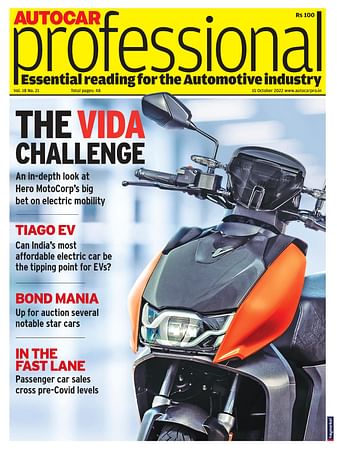Toyota incorporates a robot to test durability in new Avalon
Toyota incorporates a new robot for testing Avalon for its rough road durability.
Toyota has replaced the human test driver with a robot that would endure all the harshness of the tough durability test. It is being tried out for the testing of the new Toyota Avalon.
The rough road durability testing for Toyota’s North American vehicles is conducted on a course in Michigan that the company has specifically engineered with potholes, dips and other defects precisely placed along the track surface. These conditions inflict all the road-induced punishment that the average vehicle encounters during its lifetime into a single, bone-jarring evaluation.
This spares engineers and technicians from conducting the evaluations through this very uncomfortable ride which involves continuously circling around the pothole-filled track. As they are required to drive the vehicle at specific speeds till the necessary mileage were accumulated in the vehicle, Toyota decided to let a robot perform the test.
Toyota stresses that this is not an automated vehicle, but a simpler robotic solution using a combination of computers, actuators, levers, other mechanicals and a lot of engineering know-how. In fact, the system doesn’t utilise any of Avalon’s many advanced driver assistance or navigation features, nor any of the advanced LIDAR, sensors, and cameras used by the autonomous vehicles being developed by Toyota Research Institute (TRI).
According to Avalon chief engineer Randy Stephens, “This not only saved the engineers and technicians from having to endure the gruelling ride, it also provided a more accurate test cycle. The system was proven during Avalon development, and we plan to use it during all future North American vehicle development cycles.”
The robot is a set of components that could remotely start, shift, steer and stop the Toyota flagship vehicle. Traditional in-car global positioning systems are accurate to about four-metres, but Toyota’s VPD team developed the path control software with an accuracy of within two centimetres.
The complete navigation infrastructure allows the engineers and technicians to monitor the test from a nearby control room without the need for humans to physically occupy the vehicle through harsh testing conditions. Another benefit of the robot behind the wheel is that the test cycles were now limited by fuel capacity, instead of stopping every 30-40 minutes for swapping drivers.

Toyota's robot undergoes the harsh durability test in new Avalon.
The robot is exclusively in use by Toyota’s North American R&D headquarters in Michigan. However, the company intends to explore possible applications of the system at other Toyota R&D facilities in the future.
RELATED ARTICLES
Sept 2024 From R&D incentives to EV infrastructure: What auto components industry expects from Budget 2024
Sept 2024 From R&D incentives to EV infrastructure: What auto components industry expects from Budget 2024
US car majors hit the brakes on driverless cars
Ford Motor and Volkswagen to close self-driving startup Argo AI, due to lack of technology and clear regulations.
Autoliv and Geely to develop advanced safety tech for future vehicles
Scope of cooperation includes safety for high-level autonomous driving, intelligent steering wheel technology, a 360deg ...






 By Autocar Pro News Desk
By Autocar Pro News Desk
 15 Mar 2018
15 Mar 2018
 8558 Views
8558 Views
























